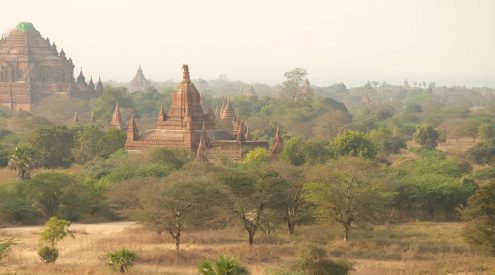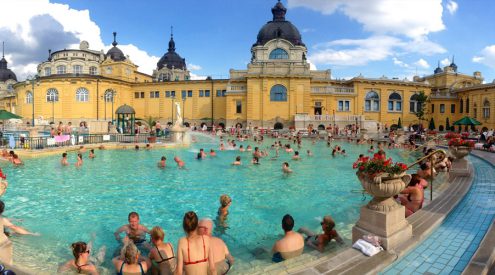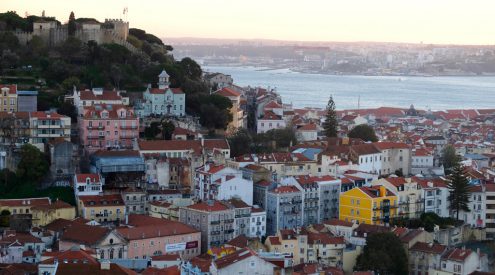A long-distance train ride is a rite of passage in India. Nothing much has changed on the railways since Paul Theroux wrote the Great Railway Bazaar in 1975. The Indian railway, the biggest employer on the continent and one of the biggest in the world, is a microcosm of society – from the bureaucratic legacy of the booking system (best use a travel agency) and the complex class system in the carriages to the millions of officials, hawkers and homeless who seem to live on trains and station platforms. A train ride takes you into the heart of India on a journey that goes beyond destination.
A caste of railway porters with a bewildering range of rates for luggage weights, two or four-wheeled barrows and even patients on stretchers vanish with your cases stacked high on their heads and reappear magically outside your designated carriage on the platform – first class AC (air conditioning), two tier AC (bunks), three tier (bunks) AC, chair car, sleeper car, second class and non-AC (with barred windows for fresh air). Finding your seat requires patience and advice from conductors – and as your journey into the heart of India begins, a brigade of stewards appears at intervals to hand out clean bedding (wrapped in brown paper), tiffins (snacks), chai and meals.
On an overnight railway ride from Hyderabad to Vishakhapatnam on the coast – ask for the right platform for Vish-whatsit if you don’t speak Hindi – I was given a brown paper bag with my bedsheet and towel (for 2nd AC class). You need air conditioning or a hill station in a hot country – which is why the main class division on the railways is AC or non-AC. I kept the bag as a memento for its quaint turn of phrase – “This linen was washed in a mechanised laundry. If you find any bedroll item tattered, torn, stained or emitting any foul smell please ask the attendant to replace the same”!
On this visit, we headed north by north-west by night train from Delhi to Amritsar in the Punjab on the border of Pakistan. The city is home to the Golden Temple, the holiest of shrines in the Sikh religion – like the Vatican to Catholics. Covering our heads and washing our feet before stepping across the temple threshold, we joined the thousands of Sikh pilgrims who come from around the world to bathe in the waters of the lake which gives the holy city its name – Amrit Sarovar (the pool of nectar) – and to worship Ram Das, the gentle guru who founded the Sikh faith in the 15th century.


Hundreds of pilgrims make their way across the causeway called the guru’s bridge which leads to the golden domed temple gilded with 750 kilograms of pure gold – where priests chant over the Sikh holy book. The marbled walls are inlaid with elaborate floral carvings called pietra dura – like the Taj Mahal. We joined the pilgrims for a vegetarian lunch in the free community dining-room – and went behind the scenes to watch an army of volunteers who feed thousands of pilgrims every day – making 3000 chapatti breads per hour on the biggest chapatti machine in the world, huge vats of chai and one of the biggest washing up teams who clean all the platters!



We were enchanted by the sayings in the dining room – “The Lord himself is the farm, himself he grows and grinds, himself he cooks, himself he places it on a platter and eats it too, himself he offers a handful of water … himself he offers a toothpick …”
Amritsar is a place of passion and revenge. The golden temple made headlines in 1984 when the Indian army stormed the shrine to relieve a siege by Sikh secessionists – leading to the deaths of hundreds of Sikh worshippers and the assassination of Indira Gandhi by her own Sikh bodyguards. We also visited the gardens of Jallianwala Bagh near the temple – scene of the massacre of hundreds of men, women and children by British troops in April 1919 – an infamous event depicted in the film Gandhi. The museum tells the story of a child survivor who waited twenty years to assassinate General Dyer, the soldier who gave the order to shoot unarmed peaceful protestors. In reading the chilling story, I was reminded that “Revenge is a dish best served cold”.


We took a vertiginous six hour bus ride from Amritsar into the snow-covered foothills of the Himalayas. We climbed to the picturesque hill stations of Dharamsala and McLeod Ganj at a height of 1800m above sea level. The Dalai Lama led his people into exile here in 1959 – and over 250 000 Tibetans who followed him over the years live on these terraced slopes today. Dharamsala – meaning pilgrims resting-place- is home to the Tibetan government in exile, the Dalai Lama’s residence, Buddhist gompas (monasteries), temples, the Tibetan museum, library and cultural centres.




The Namgyal temple is one of the main places of worship. We walked around the temple complex, spinning ancient brass prayer wheels (clockwise), chanting Buddhist mantras with the monks and novices in their saffron robes. Pilgrims traditionally make a clockwise kora (ritual circuit) around the Tsuglagkhang (central chapel) complex. If you’re in the right place at the right time, you might even get to hear the Dalai Lama giving a regular public audience – or worshipping in the chapel. We also visited the Norbulingka Institute which promotes Tibetan culture – the ancient scrolls of many ancient Buddhist manuscripts are kept in the Tibetan Library here.
We stayed at the Chonor House Hotel, a very special guesthouse run by Tibetans, with amazing views of the villages in the Himalayas. Richard Gere, a practising Buddhist, has stayed here on retreats – enjoying the tranquillity of the area. Every suite and area is decorated with exotic artefacts and murals depicting different scenes of Tibet from the yak room to the Chinese room – and the giant mural of the Lhasa palace in Tibet. We loved the Tibetan fare – momos (dumplings like dim sum), thukpas (noodle broths), tsampa (barley), salty yak butter tea and churpee yak cheese!
Talk about churpee, churpee, cheep, cheep!
Our spiritual itinerary included a visit to Haridwar (the Gateway to God), one of the seven holiest Hindu places in India in the foothills of the Himalayas in Uttarakhand where the Ganges leaves the mountains on its journey to the Bay of Bengal. Every evening, a colourful collection of sadhus (holy men), pundits (Hindu priests) and pilgrims come down to the ghats (steps leading to the river) – chant mantras, ring bells, say prayers and float candles in the aarti ceremony. India is a world away.
The tour also includes an overnight at Rishikesh on the Ganges, the birthplace of yoga which hosts an international festival of yoga every year. This sacred place of ashrams (spiritual retreats), temples and yoga centres attracts people from all over the world to mediate, learn yoga and study Hinduism. If you’re feeling brave, take a dip in the holy waters of the Ganges. Rishikesh is the former home of the global TM (transcendental meditation) movement of Maharishi Yogi, the guru of The Beatles in the 1960s.
I flew from Johannesburg to India on Jet Airways (www.jetairways.com – call 0860 JETAIR). I was a guest of www.egyptandbeyond.co.za, 011- 6784777 and Intrepid Travel – see www.intrepidbundu.com, tel: 0861 146 873.

















